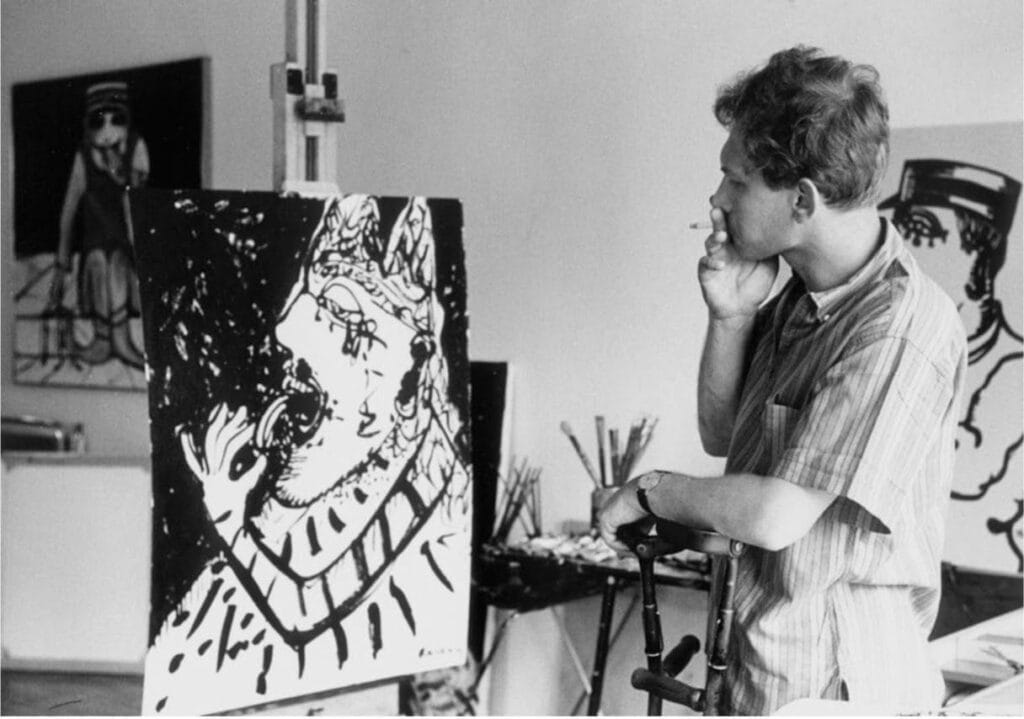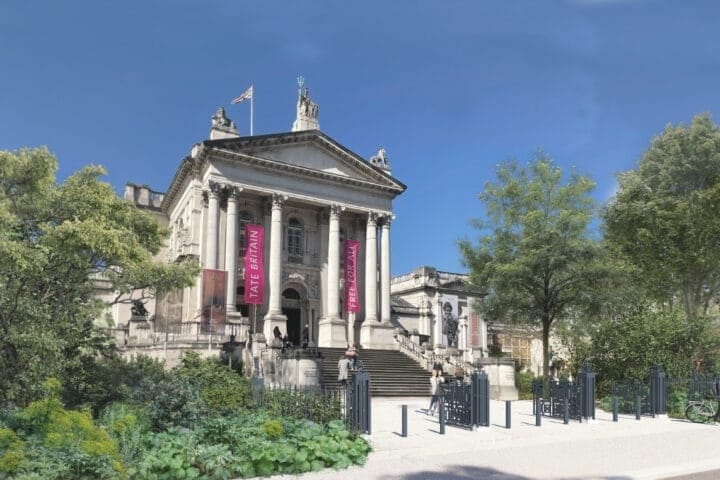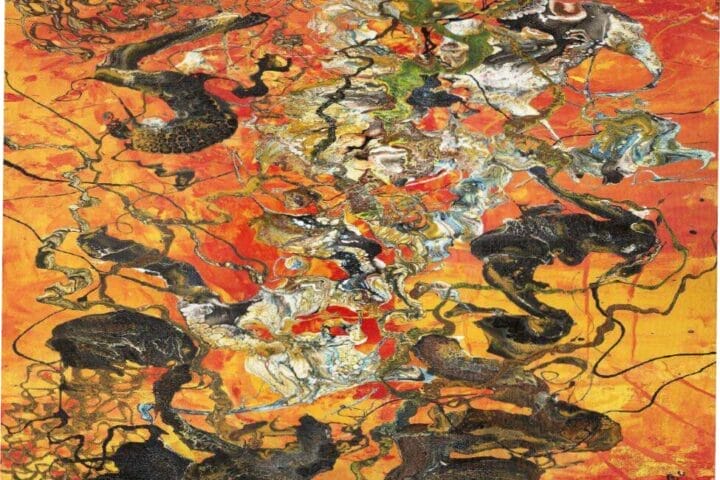(New York, NY) – Adam Lindemann, founder of Venus Over Manhattan, is pleased to announced that the gallery now represents the estate of celebrated Polish-born artist Maryan in collaboration with Kamel Mennour, Paris.
Born Pinkas Bursztyn in 1927 in Nowy Sacz, Poland, the man who later became known as Maryan grew up in a traditional working-class Jewish home. He spent World War II separated from his family in various ghettos, labor camps, and concentration camps before being sent to Auschwitz. The only member of his family to survive the Holocaust, Maryan’s private life and artistic practice were deeply influenced by his experience of war. His signature style, which used abstract forms to render brutally deformed characters, helped re-introduce the figure to contemporary painting, placing him alongside such peers as Jean Dubuffet, Enrico Baj, Karel Appel, and other artists associated with the CoBrA Group, Art Brut, and La Nouvelle Figuration. Credited as being among the first artist-eyewitnesses to directly depict their experiences of the Shoah, Maryan developed a unique approach to figurative art that transcended formal boundaries and continues to catalyze connections across cultures and generations.
Today’s announcement by Venus Over Manhattan coincides with Kamel Mennour’s mono- graphic exhibition Maryan: Une peinture vérité, on view in Paris through May 28th. In fall 2021, the Museum of Contemporary Art, North Miami presented My Name is Maryan, a critically admired retrospective of the artist’s work, curated by Alison M. Gingeras.Accompanied by a major exhibition catalog including new scholarship (Koenig Books), this exhibition will travel to the Tel Aviv Museum of Art in 2023.
Venus Over Manhattan has mounted three presentations of Maryan’s work, including a recent solo exhibition at the gallery’s Upper East Side location, curated by artist Eddie Martinez. The gallery will continue to support academic research, institutional presentations, and scholarly inquiry related to Maryan’s life and art.
About the Artist
At the end of World War II, Maryan moved between displaced persons camps across Europe, eventually settling for a time in Jerusalem, where he focused upon the develop- ment of his artistic practice. After two years in Jerusalem, Maryan mounted his first solo exhibition at the city’s YMCA.
Seeking a larger creative community with which to engage, Maryan moved to Paris in the early 1950s, quickly becoming a preeminent figure in the post-war European neo-avant garde and exhibiting his work at the Galerie de France alongside Hans Hartung, Serge Poliakoff, Pierre Soulages, and Zao Wou-Ki, as well as at the Galerie Claude Bernard, where he showed with Francis Bacon, Balthus, and Peter Blake.

Maryan’s work boldly rejected the popular taste for total abstraction in contemporary art, and his brightly colored, expressionist canvases were immediately met with positive response: he was commissioned to design a tapestry for the Monument to the Unknown Jewish Martyr in Paris, and was awarded the Prix des Critiques d’Art at the Paris Biennale. These successes in France led to a number of international exhibitions, including Maryan’s first solo presentation in the United States at the famed André Emmerich Gallery in 1960. Shortly after this exhibition, the artist moved with his wife, Annette, to New York, where he lived until his death in 1977.
Maryan produced his most important works in New York City. Known as the Personnage paintings, this group of works is marked by the presence in each canvas of a centrally positioned, wildly animated figure that dominates the composition. As critic Grace Glueck described in The New York Times, these apparitions began as “mocking, clownish zombies with mask like faces and lolling tongues, suggesting visual realizations of characters from Gunter Grass’s Tin Drum. Later, they got wider and more gestural, with maybe a touch of de Kooning, winding up as slobbering, almost illegible bundles of mouths, flailing limbs, and flying organs.”
Exhibited to wide acclaim in the years before his death, Maryan’s works presaged not only the Neo-Expressionist figuration that dominated the New York art world in the 1980s, but also the contemporary prevalence of art that blends the techniques of abstraction with figurative subject matter.
Despite the growing renown for his work, Maryan suffered a series of break downs and emotional disturbances beginning in 1974, related to his experiences of the Holocaust. His health deteriorated over the next years, and just months after the French government awarded Maryan the honorary title of Chevalier de L’Ordre des Arts et des Lettres, the artist passed away in his home at the Chelsea Hotel in Manhattan.
Maryan’s work has been the subject of numerous international solo presentations, includ- ing exhibitions at the Museum of Contemporary Art North Miami; the Tel Aviv Museum; Musée d’Art et d’Histoire du Judaïsme, Paris; and the Spertus Institute of Jewish Studies, Chicago. His work is frequently featured in major group exhibitions, including presenta- tions at Centre Georges Pompidou, Paris; The Solomon R. Guggenheim Museum, New York; The Museum of Modern Art, New York; and the MCA Chicago. Maryan’s work is held in the permanent collections of public institutions including The Museum of Modern Art, New York; Centre Georges Pompidou, Paris; Art Institute of Chicago; Carnegie Museum of Art, Pittsburgh; and the Smithsonian Institution, Washington, D.C. Maryan lived and worked in New York City until his death in 1977.
Venus Over Manhattan
55 Great Jones St, NY, NY 10012
120 East 65th St, NY, NY 10065
Gallery Hours
Tuesday – Saturday 10:00 am – 6:00 pm









